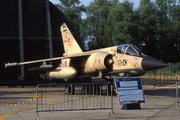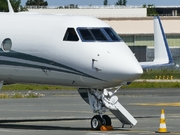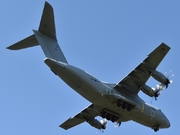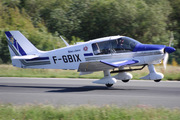Dépêches
LAN Debuts First Latin America Seamless Performance-based Navigation Route in Green Skies of Peru Project
Dépèche transmise le 23 février 2012 par Business Wire

LAN Debuts First Latin America Seamless Performance-based Navigation Route in Green Skies of Peru Project
LIMA, Peru & SEATTLE--(BUSINESS WIRE)--LAN Airlines today successfully flew Latin America’s first continuously guided flight from takeoff to landing using Performance-based Navigation (PBN) technology. The Green Skies of Peru project, a collaborative effort among LAN, GE Aviation, Peru’s air navigation service provider CORPAC and regulator DGAC, provides aircraft flying from Cusco to Lima a highly efficient, predictable flight path throughout the entire flight.
“GE and the Green Skies of Peru team have demonstrated that future air traffic management concepts are attainable today”
The project is a notable milestone in the global effort to modernize today’s obsolete airspace infrastructure to match the capabilities of today's modern aircraft systems. Deploying a continuous PBN city pair flight path creates additional predictability and continuity throughout the entire flight, compared to a single PBN arrival or departure path, while solving operational challenges at the individual airports.
“GE and the Green Skies of Peru team have demonstrated that future air traffic management concepts are attainable today,” said Giovanni Spitale, general manager of GE Aviation’s PBN Services. “PBN programs like this take dedication and teamwork to ensure that benefits are achievable by all stakeholders.”
The GE-designed PBN departure, en-route, arrival and approach procedures will save participating airlines on average 19 track miles, 6.3 minutes, 450 pounds of fuel and 1,420 pounds of CO2 emissions per flight. The new flight paths also enable increased capacity at Lima’s Jorge Chavez International Airport - a major hub in Latin America – while helping to reduce the carbon footprint at Cusco, the access point to the popular tourist destination Machu Picchu. LAN flies the route 11-17 times a day, depending on the season.
The highly-accurate paths also provide capable-aircraft with precise lateral and vertical arrival and departure guidance and improve the air traffic management variance and flow for controllers, benefiting all airspace users in the region.
“Operational excellence, passenger service and environmental protection are the pillars of our sustainability strategy, as reflected in this initiative,” said Mr. Jorge Vilches, CEO of LAN Peru. “At LAN Peru, we have made a great effort to properly train our pilots, to equip our A319/320 aircraft with state-of-the-art technology, to obtain DGAC certification for these types of operations, and to design and deploy these highly-specialized procedures in collaboration with GE Aviation. This is, undoubtedly, big news for our country, and will be of great benefit to all our passengers.”
With the success of this demonstration flight, a formal trial will commence allowing the team to validate the benefits and the paths under various operating conditions and finalize the deployment plan.
In 2009, GE, in collaboration with IATA, designed and deployed Required Navigation Performance (RNP) approach procedures for LAN at Cusco to improve access into the airport that is flanked by the Andes Mountains. Prior to the RNP paths, it was typical for one or more of LAN’s 15-21 scheduled flights per day into Cusco to be delayed or diverted due to poor weather and low visibility.
Since the RNP paths have been in use at Cusco, LAN has reduced cancellations from 12 to five, flight delays by 45% and un-stabilized approaches by 94%, per month on average. During the first year of RNP use at Cusco, more than 30,000 of LAN Peru´s passengers avoided flight cancellations or delays, thanks to the technology. With the success of the Cusco paths, LAN selected GE Aviation in 2010 to develop an RNP program at five other airports it serves including Lima.
Watch an animation of the Green Skies of Peru RNP flight here.
RNP, an advanced form of PBN technology, allows aircraft to fly precisely-defined flight paths without relying on ground-based radio-navigation signals; RNP paths can be designed to shorten the distance an aircraft has to fly en-route, and to reduce fuel burn, exhaust emissions and noise pollution in communities near airports. Because of RNP’s precision and reliability, the technology can help air traffic controllers reduce flight delays and alleviate air traffic congestion. GE has designed and deployed more than 345 RNP flight paths around the world since 2003.
GE Aviation’s PBN Services unit is a world leader in the design and deployment of PBN and is working with aircraft operators and air traffic management providers in China, South and Central America, the United States, Australia, New Zealand, Canada and Europe to implement PBN solutions. Its RNP Services is an ecomagination qualified product. Learn more about GE’s PBN Services by clicking here.
GE Aviation, an operating unit of GE (NYSE: GE), is a world-leading provider of jet engines, components and integrated systems for commercial and military aircraft. GE Aviation has a global service network to support these offerings. For more information, visit us at www.ge.com/aviation.
GE (NYSE: GE) works on things that matter. The best people and the best technologies taking on the toughest challenges. Finding solutions in energy, health and home, transportation and finance. Building, powering, moving and curing the world. Not just imagining. Doing. GE works. For more information, visit the company's website at www.ge.com.
Photos/Multimedia Gallery Available: http://www.businesswire.com/cgi-bin/mmg.cgi?eid=50179362&lang=en
- 24/04Ibis Styles London Heathrow : l'hôtel géré par un passionné d'aviation pour les passionnés d'aviation (photos + vidéos)
- 23/04 SkyUp renouvelle son partenariat avec Wizz Air
- 23/04 Play : résultats de mars 2024
- 23/04 Les garde-côtes japonais commande trois Airbus H225 supplémentaires
- 23/04 Vueling et Make-A-Wish France signent un partenariat
- 23/04 TUI annonce ses destinations au départ de Deauville pour l'été 2024.
- 23/04 Twin Jet renforce son programme de vols sur la ligne Toulouse/Rennes
- 23/04 Norse Atlantic Airways : résultats du mois de mars 2024
- 23/04 Volotea renforce son offre entre Lille et le Maroc
- 22/04 Finnair a dévoilé son programme de vol pour les saisons hiver 2024 et été 2025
- 22/04 Qatar Airways annonce le lancement de vols à destination de Kinshasa
- 22/04 Vietnam Airlines et CAE prolongent leur accord
- 22/04 Mermoz Academy de Tours commande des Tecnam P-Mentor
- 22/04 Transavia France reçoit son 2e Airbus A320neo
- 20/04 Friedrichshafen 2024 : Blackwing présente un nouveau modèle de son BW650RG
- 20/04 Friedrichshafen 2024 : JMB Aircraft présente son Phoenix
- 19/04 Friedrichshafen 2024 : le projet "Fly To The North"
- 19/04 Friedrichshafen 2024 : Aura Aero présente pour la première fois ses trois appareils
- 19/04 Friedrichshafen 2024 : Duc Hélices présente son hélice Tiger-3
- 19/04 Friedrichshafen 2024 : Splash-in Aviation expose son Pétrel X







